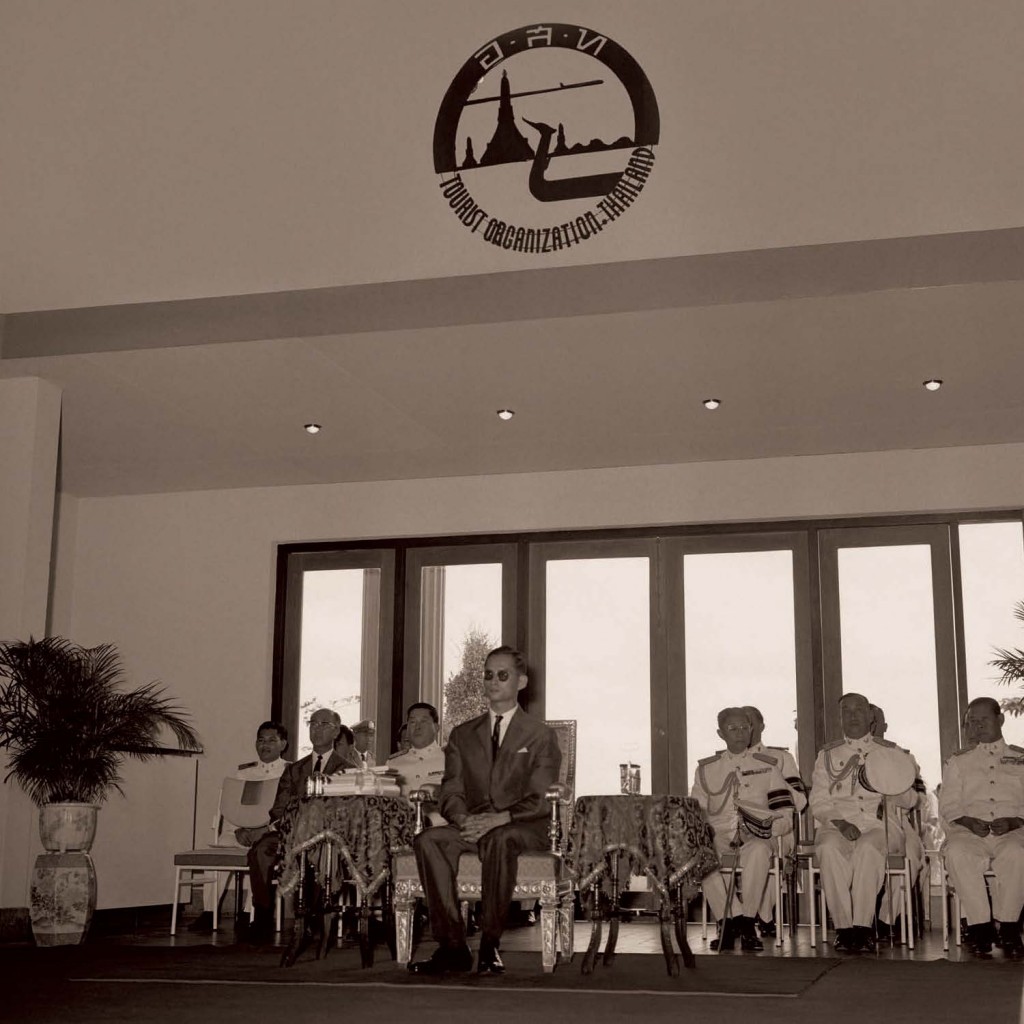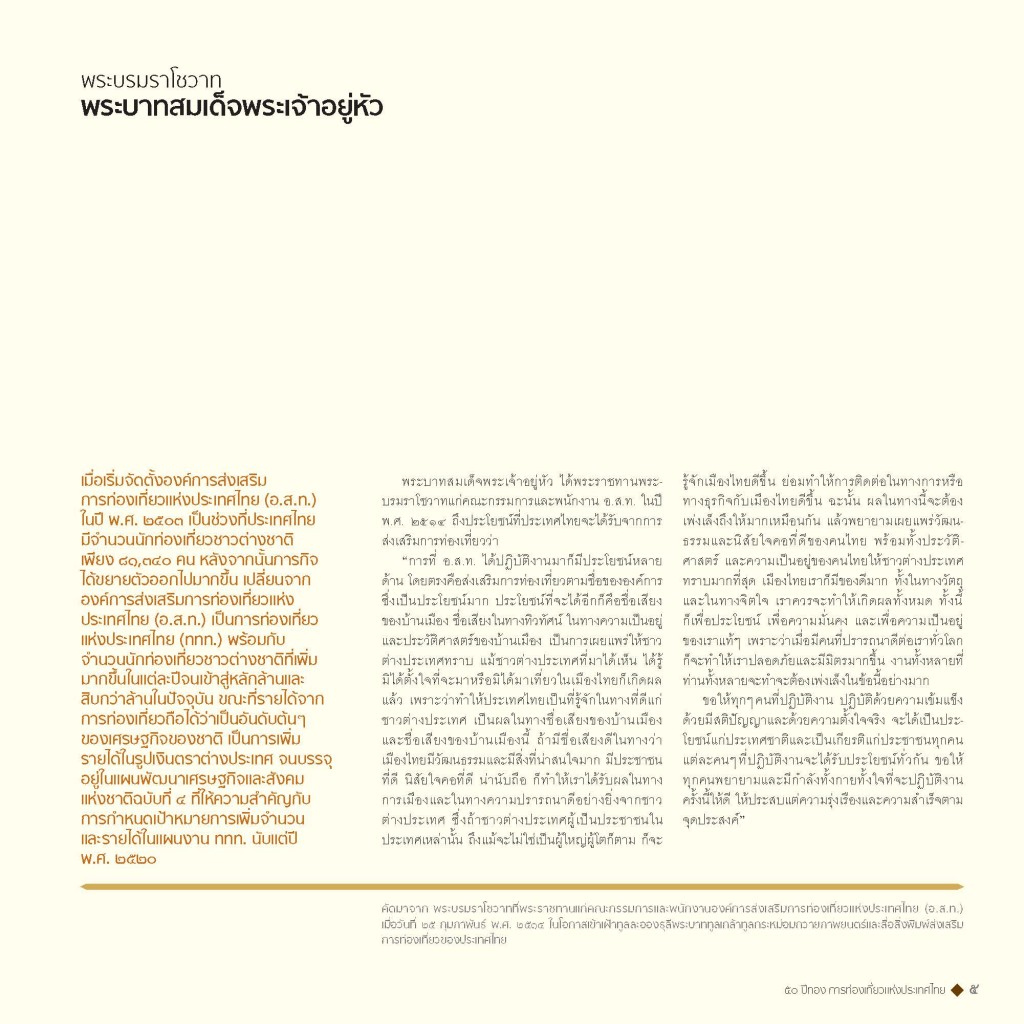
8 Jan, 2015
How Thai tourism has failed a great King
Bangkok – As the Thai travel and tourism industry nears the end of an era, some heavy-duty soul-searching is overdue about its future in the new era. There is clear evidence that it has failed to comprehensively heed the 44-year-old guidance of His Majesty King Bhumibhol Adulyadej, and will have no choice except to place those words at the heart of its future development policies.
Thailand’s brand image enjoys its supreme status today thanks largely to the marketing juggernauts triggered by two auspicious Royal birthday events. The original blockbuster, 1987 Visit Thailand Year, marked the auspicious 5th cycle 60th birthday of the King. That was followed by the celebrations marking the King’s 6th cycle 72nd birthday in 1999, when the Amazing Thailand tagline was born. Other events also directly or indirectly related to royalty include the 1996 50th anniversary of the King’s ascension to the throne, and the 200th anniversary of the reigning Chakri dynasty which marked the Bangkok Bicentennial in 1982.
These Royal events have benefitted tourism more than any other economic sector. They helped showcase the kingdom as a tourism destination par excellence. There was great pride that the Thai people love their King, the world’s longest reigning monarch, and wanted the world to experience this passion. The events helped attract hefty marketing budgets and facilitated policy changes to remove impediments and enhance accessibility. They also galvanised the entire industry into a sense of unity to get things done, and done well.
Visit Thailand Year 1987 saw visitor arrivals experience their first record-breaking surge, from 2.8 million in 1986 to 3.4 million in 1987 and again to 4.2 million in 1988. This was repeated 12 years later when arrivals again surged from 7.7 million in 1998 and 8.5 million in 1999 to 9.5 million in 2000 (see tables below). Other events produced lesser results, primarily due to external factors, but they all helped build the Thai tourism image. Most important, 1987 Visit Thailand Year spawned copycat years worldwide, including a regional Visit ASEAN Year in 1992 to mark the 25th anniversary of the founding of the regional association.
As a leader, the King can also claim to be the world’s greatest domestic tourist. Apart from one brief cross-border visit to Lao PDR for the inauguration of the First Thai-Laos Friendship bridge in 1994, he has not stepped out of the country for decades. Instead, he has travelled over virtually every inch of Thailand to ensure that the land, water and environment provide sustainability to the people, especially the rural poor.
|
When the King visited the Tourism Authority of Thailand (then known as the Tourism Organisation of Thailand) office for the first and only time in February 1971, he had the wisdom to give the TAT, and by extension, the fledgling travel & tourism industry, some guidance on what was really at stake. He made no mention of job-creation, income-generation or visitor arrivals. In less than 500 words, he simply recommended building a good global reputation for Thailand by highlighting its real assets – natural beauty, rich culture, well-mannered people and way of life. If this can be done, he said, Thailand will enjoy good relations with foreigners which in turn will help make it more safe and stable. He advised, “Everything you do you must stress this. I hope everyone who is working (at the TAT), does it with strength, thought and concentration so that it will benefit the country. I hope everyone performs their work to the best of their abilities and succeeds in their objectives.”
The message was clear, and meant for an audience well beyond the TAT. Take care of the core Thai tourism assets, both hardware and software, and the reputation will follow. Not “brand,” but “reputation.” Making that foresight even more remarkable was that the guidance was offered in a year when the TAT was only 11 years old, the King was only 43 years old and Thailand received a mere 81,340 visitors. In 34 years of covering Thai tourism, I have rarely seen the King’s simple but insightful words quoted at public tourism events. They were only used in 2010 when the TAT was celebrating its 50th anniversary and issued a commemorative publication in which one page was devoted to a reminder about the King’s 1971 visit. That page is reproduced below.
|
Today, as the 87-year-old King lies frail and ailing, the Thai travel and tourism industry needs to ponder whether it has achieved a balanced scorecard or whether the marketing scorecard has outstripped all others. An objective analysis of whether tourism has developed in line with the King’s guidance would yield some dubious results. He certainly would be pleased that Thailand has millions of friends, and that tourism has created jobs and alleviated poverty in many parts of rural Thailand. But on the flip-side, the tourism gold rush has led to a swathe of social, cultural and environmental problems, including deforestation, encroachment and child prostitution. In 1971, that is probably not what the King intended to see happen three decades later.
The current marketing buzzword is “Thainess”, which is positioned as a concept that highlights the best of Thai identity, culture, cuisine, heritage and traditions. One major missing link in the “Thainess” roster is the Sufficiency Economy, a holistic concept that underpins many Royal Projects nationwide. A perfect fit with the Gross National Happiness concept of the King of Bhutan, the Sufficiency Economy concept can revolutionise travel & tourism in the new era, in Thailand and worldwide. So far, the Thai tourism industry, especially the private sector, has only paid it lip-service. No study has ever been done to show the environmental impact of 26 million visitors, including daily water consumption and garbage output. At the same time, Thai society is being reshaped by globalisation, at least in the urban areas.
Rectifying this rapidly growing imbalance is the primary future challenge.
Thanks to Thailand’s marketing genius and geographical location advantage, generating visitor arrivals will be easy. To address some of the underlying problems will be a lot more difficult. The current military government is attempting to use its authoritarian status to address some of them. But the private sector needs to match this with some self-enforcement. This is only a government in transition. When democracy returns, things may just revert to their usual modus operandi.
In the years ahead, Thailand will need to badly balance its budgets between marketing and management, human resources development, environmental and cultural preservation, law enforcement and simply inculcating a sense of discipline into the people. The TAT has done a stellar marketing job. The Ministry of Tourism and Sports and the private sector now need to match this on the product preservation side. As some Thai columnists are pointing out, the age of “mai pen rai” (never mind) and “sanuk” (fun”) is nearing an end. A laid-back, shoulder-shrugging attitude is one aspect of “Thainess” that will have to change.
Global tourists have got plenty of choice. Word-of-mouth marketing is becoming a powerful force. Social-media networks allow bad experiences to be instantly broadcast to hundreds of friends and colleagues. As many “brands” are discovering, it does not take much to convert a good image into a bad one.
The best legacy that the industry can bequeath the King is to commit itself to achieving that balanced scorecard. By adopting the Sufficiency Economy as an inherent part of its “Thainess” mantra, it can deploy the same passion and energy to address the sustainability challenge that it did when exploiting Royal events for marketing campaigns. No need for fancy consultants, academic reports, or ministerial directives. Framing the King’s guidance on the walls of every travel & tourism location, office and classroom in the country would be a good start.
Time is running out. When the transition takes place, the Thai tourism industry will rue having failed its great King, and not having worked harder to heed his guidance.
| International Tourist Arrivals to Thailand 1985-90 | |||
| Year | Number | +/-(%) | Remarks |
| 1985 | 2,438,270 | +3.90 | |
| 1986 | 2,818,092 | +15.58 | |
| 1987 | 3,482,958 | +23.59 | Visit Thailand Year, > 3 Million |
| 1988 | 4,230,737 | +21.47 | > 4 Million |
| 1989 | 4,809,508 | +13.68 | |
| 1990 | 5,298,860 | +10.17 | > 5 Million |
| International Tourist Arrivals to Thailand 1995-2000 | |||
| 1995 | 6,951,566 | +12.73 | |
| 1996 | 7,192,145 | +3.46 | > 7 Million |
| 1997 | 7,221,345 | +0.41 | Asian Economic Crisis |
| 1998 | 7,764,931 | +7.53 | Amazing Thailand 1998-1999 |
| 1999 | 8,580,332 | +10.50 | > 8 Million |
| 2000 | 9,508,623 | +10.82 | 40th Anniversary TAT |
| Source: Ministry of Tourism and Sports | |||





Liked this article? Share it!